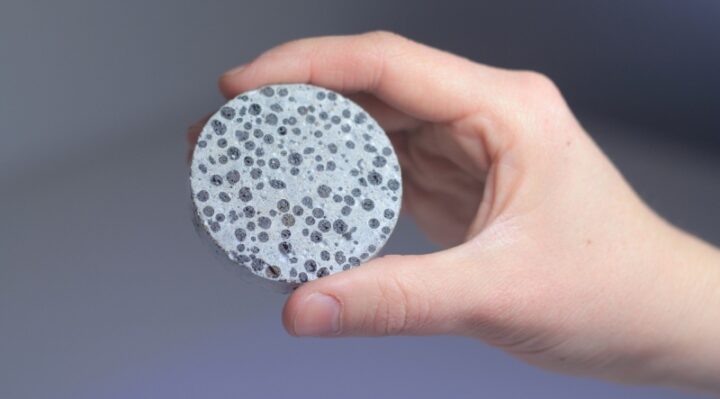
Through a happy accident, scientists have invented a new class of materials known as “glassy gels,” which are semi-liquid but difficult to shatter.
These gels have unusual qualities that make them potentially useful for a wider range of applications than typical plastics, which are either soft and readily ripped or hard and brittle. They are stretchy, curiously sticky, and have the ability to “self-heal” if cut.
As per Michael Dickey, a materials scientist from North Carolina State University (NCSU), “We’ve developed a new category of materials known as glassy gels. These materials possess the hardness of glassy polymers but can stretch up to five times their original length under sufficient force, rather than fracturing.”
However, Dickey informs ScienceAlert that, unlike many other fortunate scientific discoveries, the intention was never to create an entirely new class of substances.
When NCSU researcher Meixiang Wang was experimenting with ionogels-materials consisting of a polymer grew with an ionic liquid that conducts electricity-“we stumbled into these interesting materials,” he says.
Wang was attempting to create wearable, flexible electronics that may be utilized in robots, medical gadgets, or pressure sensors. Wang changed the mixture to create a gel that at first appeared to be a “mundane piece of transparent, flexible plastic,” but testing later revealed that it was actually extremely hard and not brittle like other ordinary plastics.
According Dickey “We were fascinated by their exceptional qualities, driving us to explore further for a deeper comprehension”.
An ionic liquid, which is comparable to water but is fully composed of charged particles, allowing it to conduct electricity, is used to make the glassy gels. The liquid separates the polymer chains when combined with a polymer precursor, giving the material its soft, elastic properties. The polymer chains are likewise prevented from separating by the ions’ strong attraction to them at the same moment.
Dickey explains, “Ultimately, the material’s hardness stems from its attractive forces, yet it retains the ability to stretch thanks to additional spacing.”
Despite having between 50 and 60 percent liquid by volume, the glassy gels don’t dry up, and tests revealed that they have “enormous” fracture strength and toughness.
Also, the material possesses a sort of memory that enables a stretched gel to maintain its shape before shrinking back to its original form when heated. It can also “self-heal,” rebuilding if cut.
Such regenerating qualities are not very novel, while being uncommon, especially in materials that resemble stretchable gel. The considerably more difficult effort of creating normally rigid materials-like metals, glass, solar panels, and concrete—that can be repaired when cracked has recently been accomplished by scientists. Materials that can fix themselves could contribute to waste reduction in the electronics, fashion, and construction sectors if they become commercially available.
However, the unusual combination of the extraordinary properties of the glassy gels is a topic that needs more investigation.
Dickey points out, “Perhaps the most captivating aspect of the glassy gels is their remarkable adhesiveness. While we comprehend their hardness and stretchability, the factors contributing to their strong adhesive properties remain speculative.”
Before these gels can be employed in any practical form, more testing and optimization of the “gel” are definitely needed. However, when considering prospective uses, Dickey notes that durable materials that transmit energy, like the gel does, are helpful in batteries.
Other possible applications include the 3D printing of materials that resemble plastic using less complex methods than melt-processing, which is the present method used to create commercial plastics from starting resins. For every stage of the plastic production process, this method frequently requires transferring products to different facilities, although glassy gels can be injected into a mold and UV-cured.
Dickey notes that his team’s priority is to have a deeper understanding of the fundamentals of how these materials develop and the reason behind the seeming “magic ratio” of solvent to polymer that gives the gels their special qualities before focusing on applications.
According Wang “With the array of distinct properties they exhibit, we have high hopes that these materials will prove highly valuable”.


